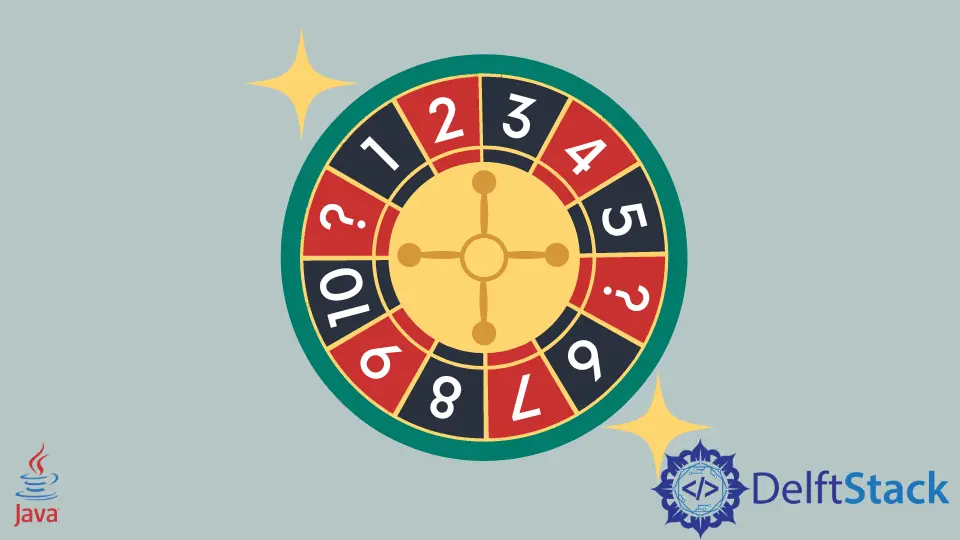如何在 Java 中生成一个 1 到 10 之间的随机数
Rupam Yadav
2023年10月12日
-
random.nextInt()生成 1 和 10 之间的随机数 -
Math.random()生成 1 到 10 之间的随机数 -
ThreadLocalRandom.current.nextInt()生成 1 到 10 之间的随机数

我们将看看在 Java 中随机生成 1 到 10 之间的随机数的步骤。我们将看到三个可以生成 1 到 10 之间随机数的 Java 包或类,以及其中哪个是最适合使用的。
random.nextInt() 生成 1 和 10 之间的随机数
java.util.Random 是 Java 自带的一个包,我们可以用它来生成一个范围之间的随机数。在我们的例子中,范围是 1 到 10。
这个包有一个类 Random,它允许我们生成多种类型的数字,无论是 int 还是 float. 检查一下这个例子,以便更好地理解。
import java.util.Random;
public class Main {
public static void main(String[] args) {
int min = 1;
int max = 10;
Random random = new Random();
int value = random.nextInt(max + min) + min;
System.out.println(value);
}
}
输出:
6
为了证明上面的技术是有效的,并且每次都能生成随机数,我们可以使用一个循环来生成一个新的随机数,直到它完成。由于我们的数字范围不大,随机数可能会被重复。
import java.util.Random;
public class Main {
public static void main(String[] args) {
Random random = new Random();
for (int i = 1; i <= 10; i++) {
int value = random.nextInt((10 - 1) + 1) + 1;
System.out.println(value);
}
}
输出:
10
7
2
9
2
7
6
4
9
Math.random() 生成 1 到 10 之间的随机数
另一个可以帮助我们实现目标的类是 Math,它有多个静态函数来随机化数字。我们将使用 random() 方法。它返回一个 float 类型的随机值。这就是为什么我们要把它转换为一个 int。
public class Main {
public static void main(String[] args) {
int min = 1;
int max = 10;
for (int i = min; i <= max; i++) {
int getRandomValue = (int) (Math.random() * (max - min)) + min;
System.out.println(getRandomValue);
}
}
输出:
5
5
2
1
6
9
3
6
5
7
ThreadLocalRandom.current.nextInt() 生成 1 到 10 之间的随机数
我们列表中最后一个获取 1 到 10 之间随机数的方法是使用 JDK 7 中为多线程程序引入的 ThreadLocalRandom 类。
下面我们可以看到,我们必须调用该类的 current() 方法,因为我们希望在当前线程中生成随机数。
import java.util.concurrent.ThreadLocalRandom;
public class Main {
public static void main(String[] args) {
int min = 1;
int max = 10;
for (int i = 1; i <= 10; i++) {
int getRandomValue = ThreadLocalRandom.current().nextInt(min, max) + min;
System.out.println(getRandomValue);
}
}
}
输出:
3
4
5
8
6
2
6
10
6
2
作者: Rupam Yadav
Rupam Saini is an android developer, who also works sometimes as a web developer., He likes to read books and write about various things.
LinkedIn